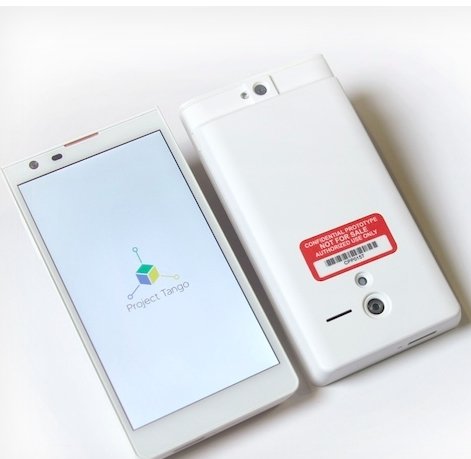グーグルがスマートフォンで3Dマッピングを実現する「プロジェクト・タンゴ」を発表 - Google Launches ‘Project Tango’ 3D-Mapping Smartphone
Googleは、「プロジェク・トタンゴ」を立ち上げた。これは、屋内と屋外の環境をマッピングすることが可能な3Dセンサーを搭載した実験スマートフォンや開発キット。2014年2月20日頃から世界中が、この話題でもちきりだ。
(article from Japan http://appllio.com/20140222-4898-google-project-tango-3d-mapping-movie)
Google today launched Project Tango, an experimental smartphone and developer kit that incorporates 3D sensors able to map indoor and outdoor environments. Designed as a 5-inch phone containing custom hardware and software, the first Project Tango prototype makes more than a quarter million 3D measurements each second, tracking three-dimensional motion to create a visual 3D map of the space around itself. Google describes Project Tango primarily as a mapping tool, automatically capturing the world around each user to provide directions, dimensions, and environmental maps.
What if you could capture the dimensions of your home simply by walking around with your phone before you went furniture shopping? What if directions to a new location didn't stop at the street address? What if you never again found yourself lost in a new building? What if the visually-impaired could navigate unassisted in unfamiliar indoor places? What if you could search for a product and see where the exact shelf is located in a super-store?
The company also pictures Project Tango as the first step towards fully immersive augmented reality games that merge gameplay with real world locations.
Imagine playing hide-and-seek in your house with your favorite game character, or transforming the hallways into a tree-lined path. Imagine competing against a friend for control over territories in your home with your own miniature army, or hiding secret virtual treasures in physical places around the world?
According to TechCrunch, Project Tango utilizes a vision processor called the Myriad 1, from Movidius, which is incredibly power efficient compared to other 3D-sensing chips on the market. The power necessary for 3D chips to function has thus far been one of the major issues preventing the technology from being incorporated into a smartphone, but because it functions like a co-processor much like Apple's own M7 motion co-processor, it is able to draw less power.(via http://www.macrumors.com/2014/02/20/google-project-tango/)
(article from Japan http://appllio.com/20140222-4898-google-project-tango-3d-mapping-movie)
